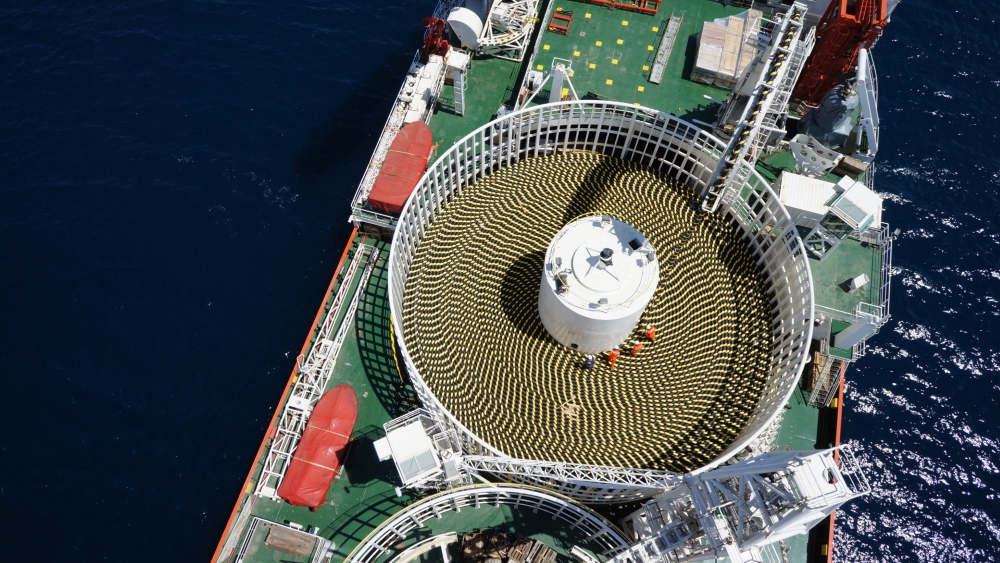It pays to spend time in the data— in this case the corporate end-user facility investment data from all of 2024 that form the basis of this issue’s Governor’s Cups, Top Metros and Top Micropolitans rankings.
With just under 70 qualifying projects in both 2023 and 2024, Maryland is as solidly middle of the pack among states in this year’s Governor’s Cups race as it is middle of the East Coast in the Mid Atlantic.
Maryland regions appear among the top metro areas along that stretch of the coast too. The state accounts for 20 of the 104 qualifying corporate facility projects in the four-state/district Washington-Arlington-Alexandria metro area.
Leading the way among those 20 projects is Frederick with eight of them, followed by three in Bethesda/North Bethesda, two each in Rockville and Beltsville and a project apiece in Germantown, Forestville, Bowie, Lanham and Laurel.
Highlights from Greater Baltimore
The total of 37 projects in the Baltimore-Columbia-Towson metro area — just behind the 39 projects in the Tampa and Richmond, Virginia, metros — is good enough for No. 7 among metro regions across the entire South Atlantic, beating out Raleigh-Cary, North Carolina, and the Hampton Roads region of Virginia Beach-Chesapeake-Norfolk.
Among the largest investments last year in the metro was from Belgium’s Cenergy Holdings, which in July 2024 reached a final decision to construct a cable manufacturing facility after its U.S. subsidiary Hellenic Cables Americas acquired a 38-acre property at Wagners Point in Baltimore. “The first phase includes the construction of a land cables plant to address USA’s growing need for Transmission & Distribution grid upgrades of cost ca. US$200 million, including the property acquisition,” the company stated in a release. “Design is complete, permitting is on track and construction works are expected to commence by the end of the year. The second phase shall include further expansion to manufacturing submarine cables subject to firm developers’ offtake agreements and related final development decisions.”
The company in February won a major contract to supply cable for the Silver Run Expansion, a submarine power transmission expansion project under the Delaware River between Delaware and New Jersey. The cables for that contract will be manufactured at the company’s plant in Corinth, Greece.
One headquarters project stands out for its identification with a sport long associated with Maryland. ECD Lacrosse, founded in 2011 by former lacrosse “stick doctor” Greg Kenneally, is moving from its hometown of Towson into bigger digs it purchased for $13.3 million in Hunt Valley. The company — whose name is derived from products called East Coast Mesh and East Coast Dyes that Kenneally perfected in his basement — employs 30 people and will complete the move in 2026.
As reported by Melody Simmons in the Baltimore Business Journal, the deal came about when Kenneally reached out to an old high school teammate, Steele Stanwick, who went on to play Major League Lacrosse and now works as an office and industrial real estate broker at KLNB.
Data Center Giant
The biggest investment by far in these capital region communities is a $1.3 billion, two-facility data center investment in Frederick from Rowan Digital Infrastructure. The Denver-based hyperscaler, a portfolio company of Quinbrook Infrastructure Partners, closed $975 million in construction financing for the first phase in January. Phase one construction is well underway, the company said, with additional phases in advanced development.

ECD Lacrosse, founded in Towson, will move into bigger digs in Hunt Valley by 2026.
Image courtesy of ECD Lacrosse
The project is taking up part of the 2,100-acre data center campus and fiber-optic loop envisioned and announced by Quantum Loophole and TPG Real Estate in 2021. After some friction between those partners, TPG took over sole control of the $5 billion project in late 2024 and its Catellus Development Corporation will be the sole developer.
As for Rowan, “Our hyperscale data center campuses provide the critical infrastructure needed to power cloud, AI and advanced computing,” said CEO Charley Daitch, noting that data center capacity is expected to grow by 20% annually over the next decade. The company has over 1,500 MW of contracted grid capacity secured and multiple hyperscale data center projects in development across the U.S. “Rowan’s focus is on delivering energy-efficient, sustainable data centers that are the foundation of the digital economy and the ‘picks and shovels’ of emerging technologies.”

Before joining Rowan in 2023, Daitch led teams at Amazon Web Services and spearheaded the AWS energy and water organizations, experience that directly feeds into Rowan’s focus on sustainability at a time when many communities are concerned about data centers’ power draw.
A study commissioned by the Maryland Tech Council finds that the construction of Rowan Frederick I, II, and III data centers is expected to generate more than $2.2 billion in statewide economic activity and create more than 15,500 jobs, along with $1 billion in labor income over the two-plus year duration.
“These projects will also result in an estimated $7.3 million in Frederick County tax revenues during the construction phase, not including permitting and impact fees, and more than $57 million in state-level tax revenues, largely driven by increased sales tax receipts,” Rowan stated. “Once operational, the facilities are expected to support over $346 million in statewide economic activity each year, creating 1,350 jobs across the state and generating approximately $19 million in annual tax revenue for Frederick County and $39 million for Maryland.”
Rowan has launched a new STEM center in partnership with Frederick County Public Schools, is working with Frederick Community College on an apprenticeship program and is a major donor and active partner with Habitat for Humanity of Frederick County to build affordable workforce housing units at the community’s West All Saints Street Project.
Big Projects in Top Micro Cumberland
Among the Top Micros saluted in this issue, one beacon stands out in the Maryland countryside. Cumberland, the bi-state community in Allegany County tucked into the skinny part of western Maryland against the West Virginia state line along the North Branch Potomac River and I-68 (and just below the Pennsylvania state line), tallied four projects in 2024.
Among them were a 95-job investment from Ireland-based Kingspan Roofing + Waterproofing (following the acquisition of IB Roofing); a million-dollar project from Geocycle LLC in Rawlings, an 18-job expansion from Total Biz Fulfillment in Westernport and a $178 million investment by Northrop Grumman in Carpendale, West Virginia, just across the river oxbow.
A thorough telling of the Kingspan project story posted by Allegany County Economic and Community Development in October said the company’s search for an East Coast location to launch U.S. manufacturing “led to the 348,000-sq.-ft. former Hunter Douglas facility in Allegany County, which had closed only 18 months prior. The building’s broker, Binswanger, facilitated initial discussions with Kingspan’s site selection consultant and business broker, Deloitte, drawing in the Maryland Department of Commerce for additional support. The Department of Commerce engaged Allegany County Economic and Community Development (ACECD) to provide key insights on the county and help facilitate communication between stakeholders.”
Skilled labor and advantageous rail connections helped sway the company to choose the Maryland location over candidate sites in Pennsylvania and West Virginia, ACECD said. The skilled labor wasn’t just visible in statistics, the account says. “Angella Moon, a Maryland Department of Labor representative who was directly involved with community members and former Hunter Douglas employees,” brought real-world insights and a human touch to the discussions.
“Adding context to Allegany’s workforce beyond the numbers gave Kingspan the confidence to meet their hiring goal of 95 full-time employees in the first five years,” said ACECD Senior Project Manager Nathan Price in the posted story. “We also brought Allegany College of Maryland and their Western Maryland Works program into the conversation to demonstrate that Allegany County not only has existing skilled talent but also has the means to build a workforce pipeline for the future.

